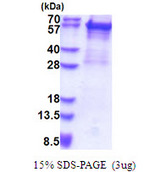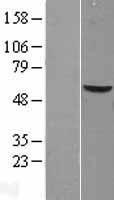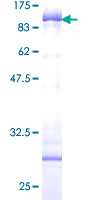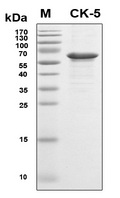order histories, retained contact details for faster checkout, review submissions, and special promotions.
Forgot password?
order histories, retained contact details for faster checkout, review submissions, and special promotions.
Locations
Orders Processing,
Shipping & Receiving,
Warehouse
2 Shaker Rd Suites
B001/B101
Shirley, MA 01464
Production Lab
Floor 6, Suite 620
20700 44th Avenue W
Lynnwood, WA 98036
Telephone Numbers
Tel: +1 (206) 374-1102
Fax: +1 (206) 577-4565
Contact Us
Additional Contact Details
order histories, retained contact details for faster checkout, review submissions, and special promotions.
Forgot password?
order histories, retained contact details for faster checkout, review submissions, and special promotions.
KRT5 / CK5 / Cytokeratin 5
keratin 5
The protein encoded by this gene is a member of the keratin gene family. The type II cytokeratins consist of basic or neutral proteins which are arranged in pairs of heterotypic keratin chains coexpressed during differentiation of simple and stratified epithelial tissues. This type II cytokeratin is specifically expressed in the basal layer of the epidermis with family member KRT14. Mutations in these genes have been associated with a complex of diseases termed epidermolysis bullosa simplex. The type II cytokeratins are clustered in a region of chromosome 12q12-q13.
| Gene Name: | keratin 5 |
| Family/Subfamily: | Keratin , not assigned-Keratin |
| Synonyms: | KRT5, 58 kd cytokeratin, 58 kDa cytokeratin, CK5, CK-5, Cytokeratin-5, DDD, EBS2, Keratin 5, KRT5A, Type-II keratin Kb5, Cytokeratin 5, K5, Keratin-5 |
| Target Sequences: | NM_000424 NP_000415.2 P13647 |
Publications (6)







If you do not find the reagent or information you require, please contact Customer.Support@LSBio.com to inquire about additional products in development.









